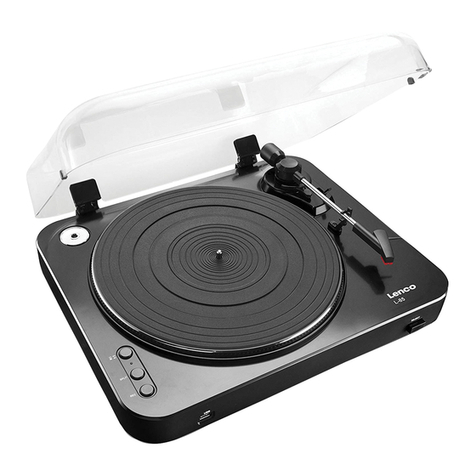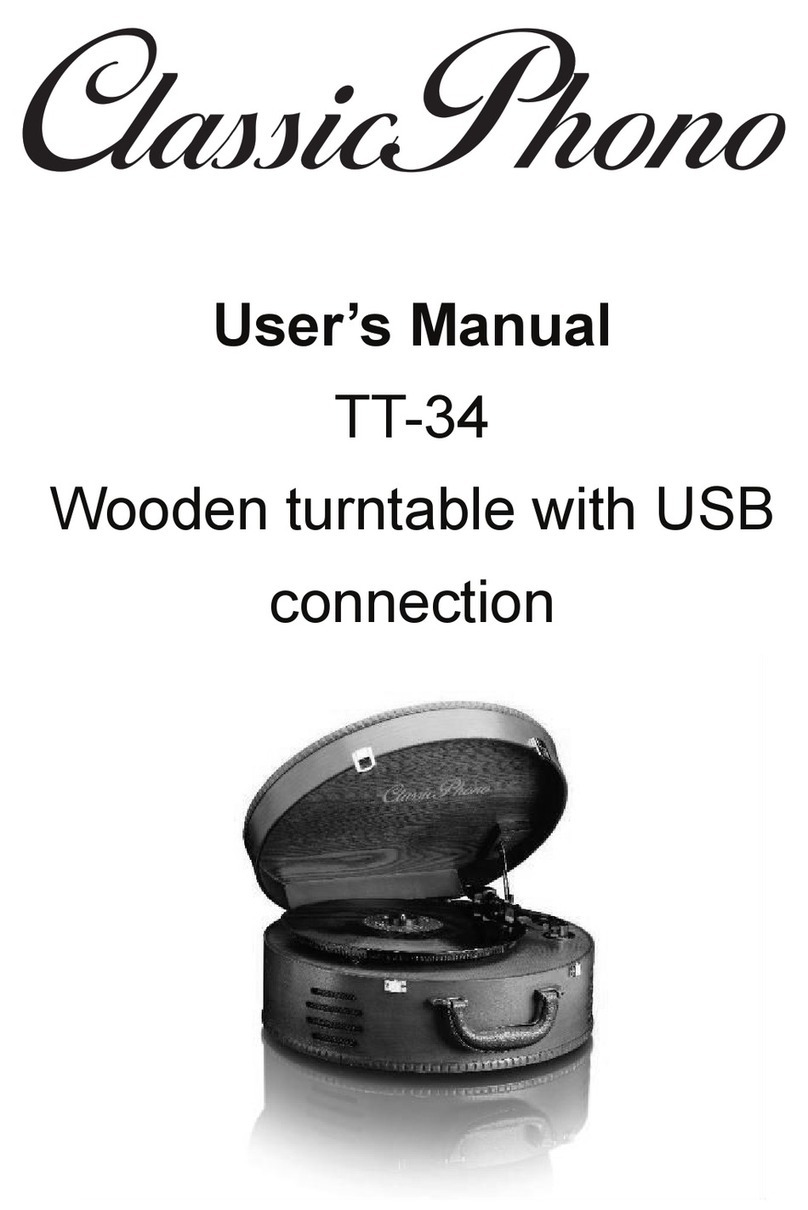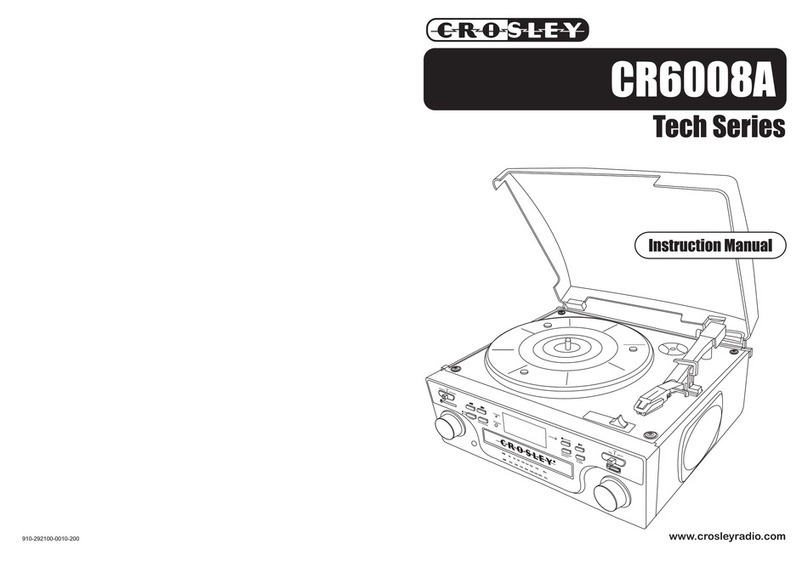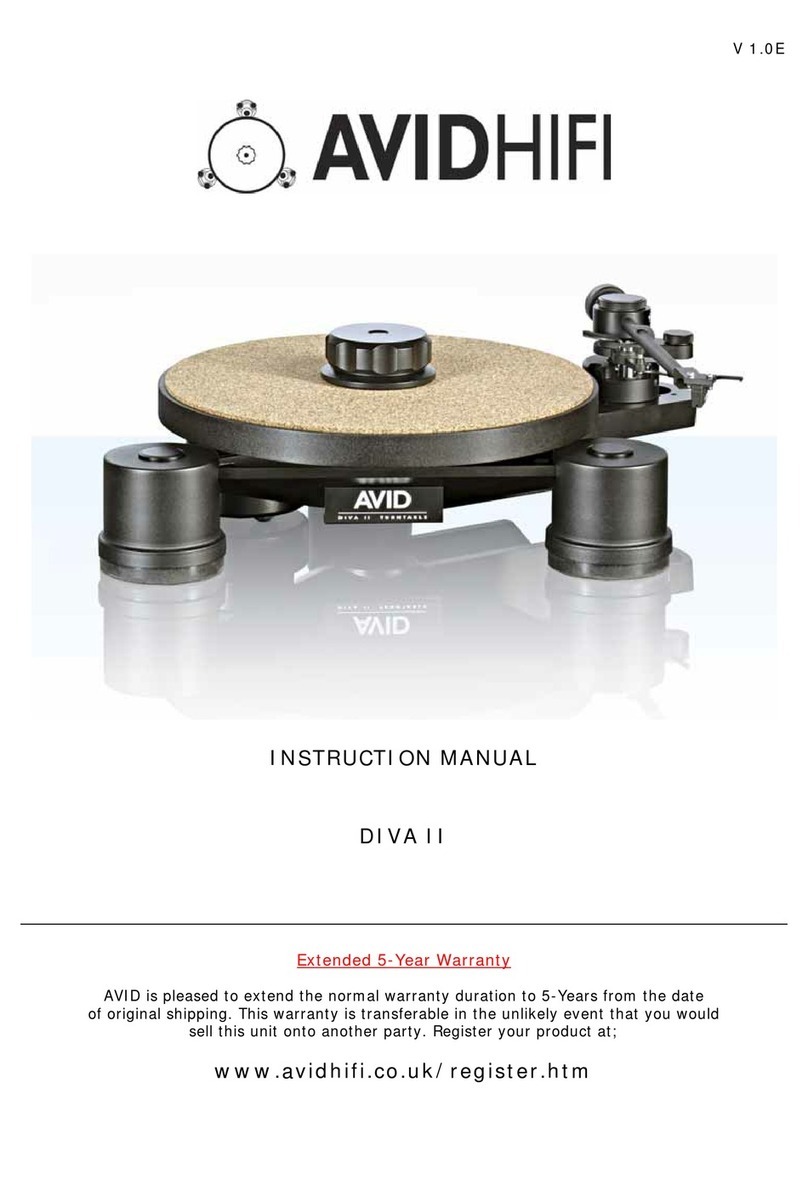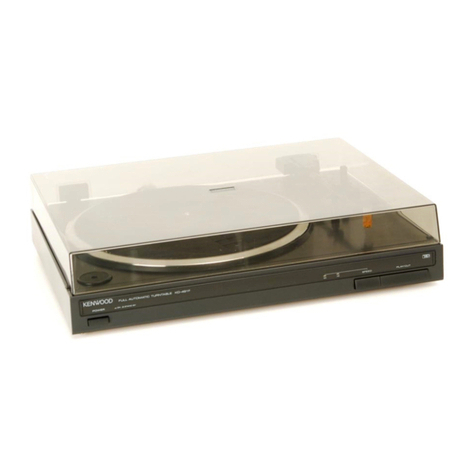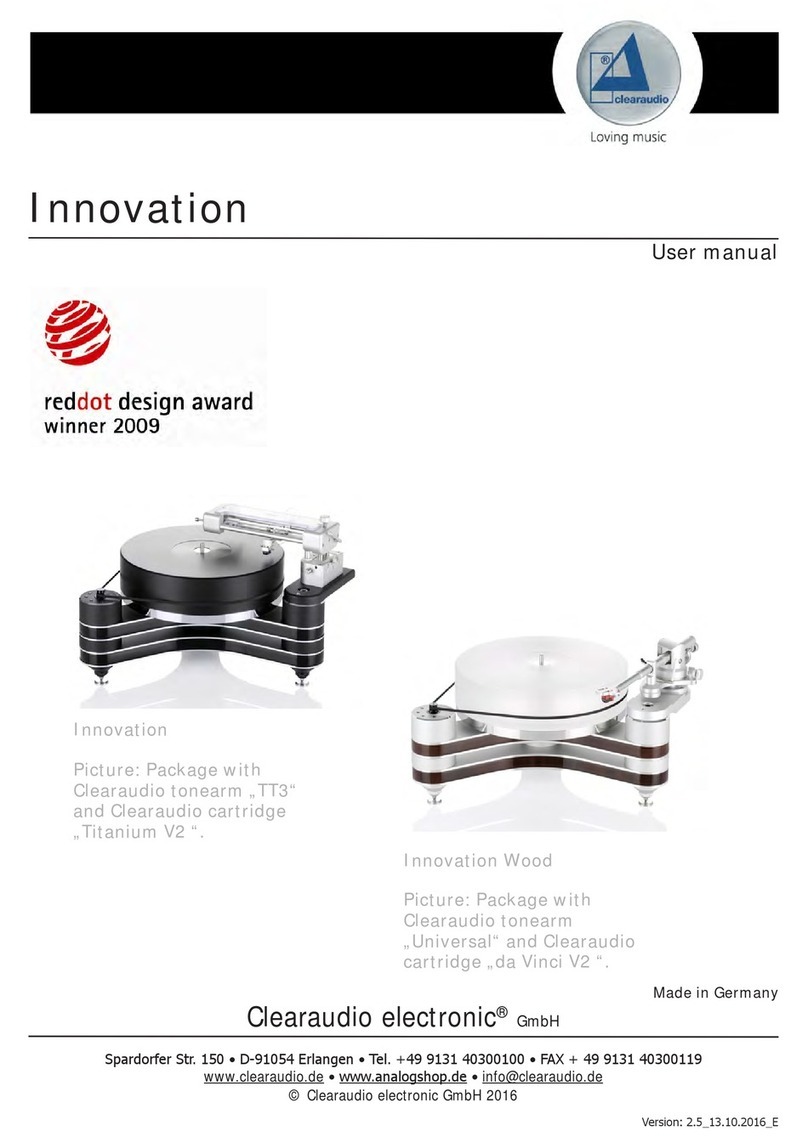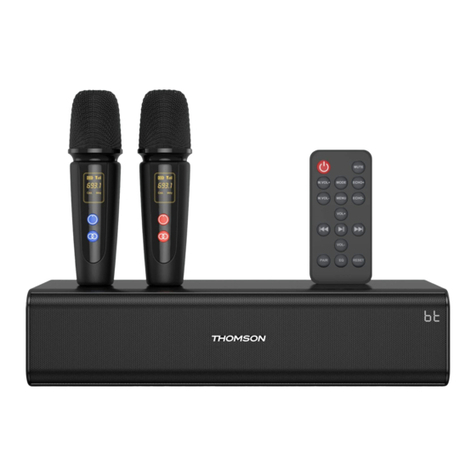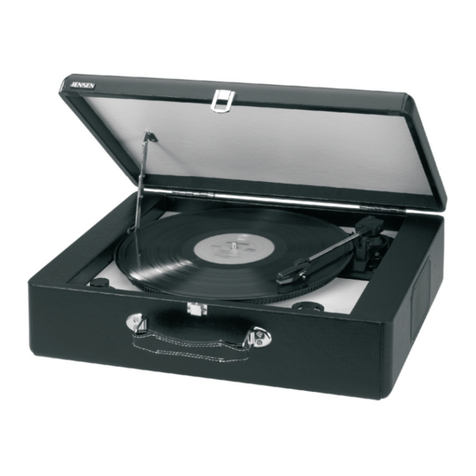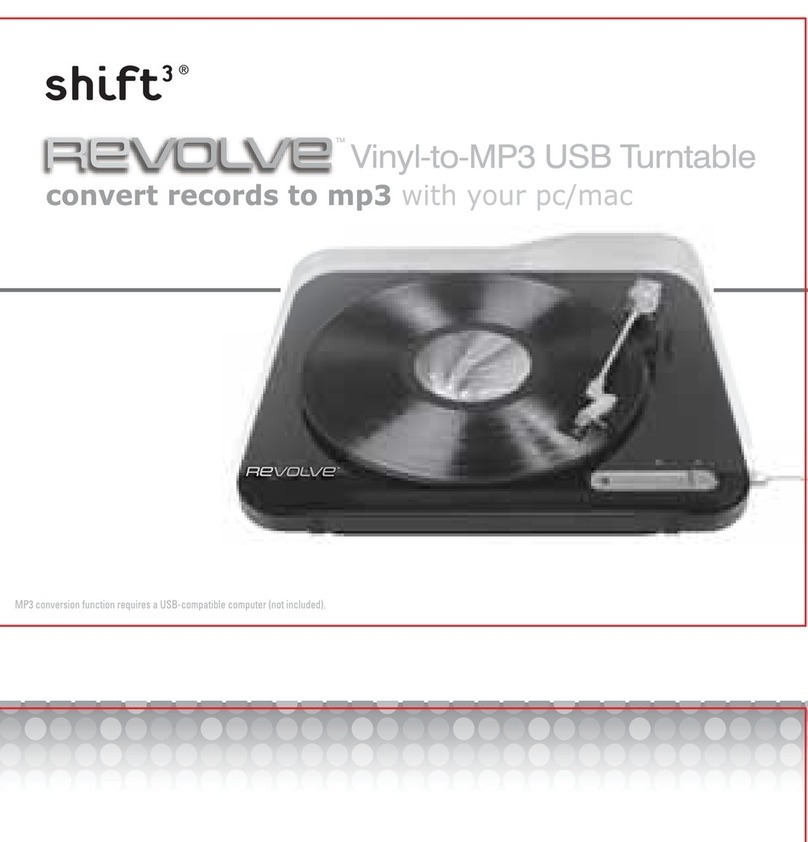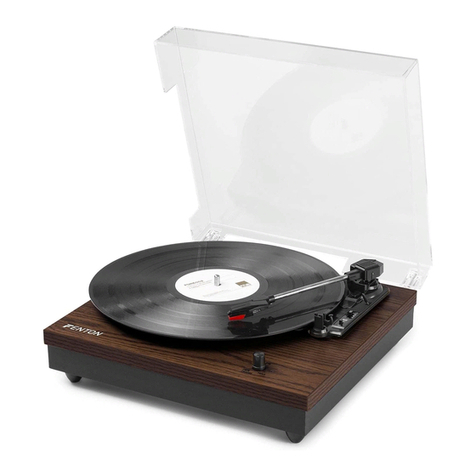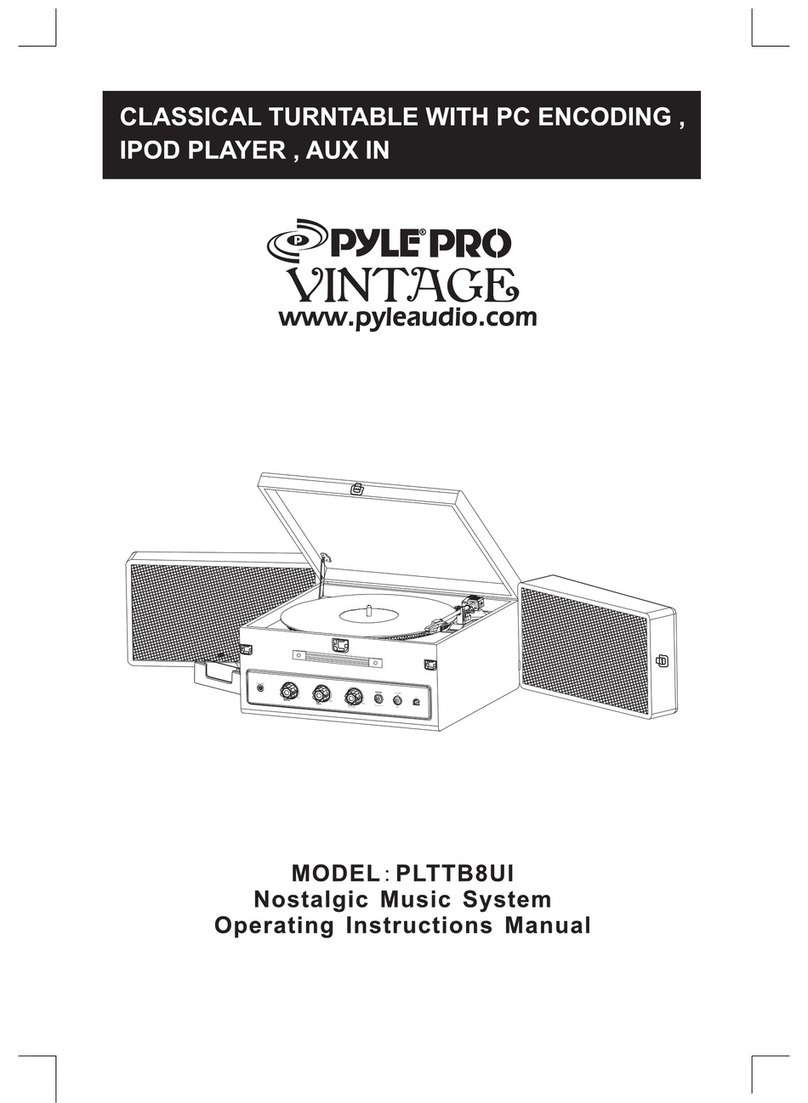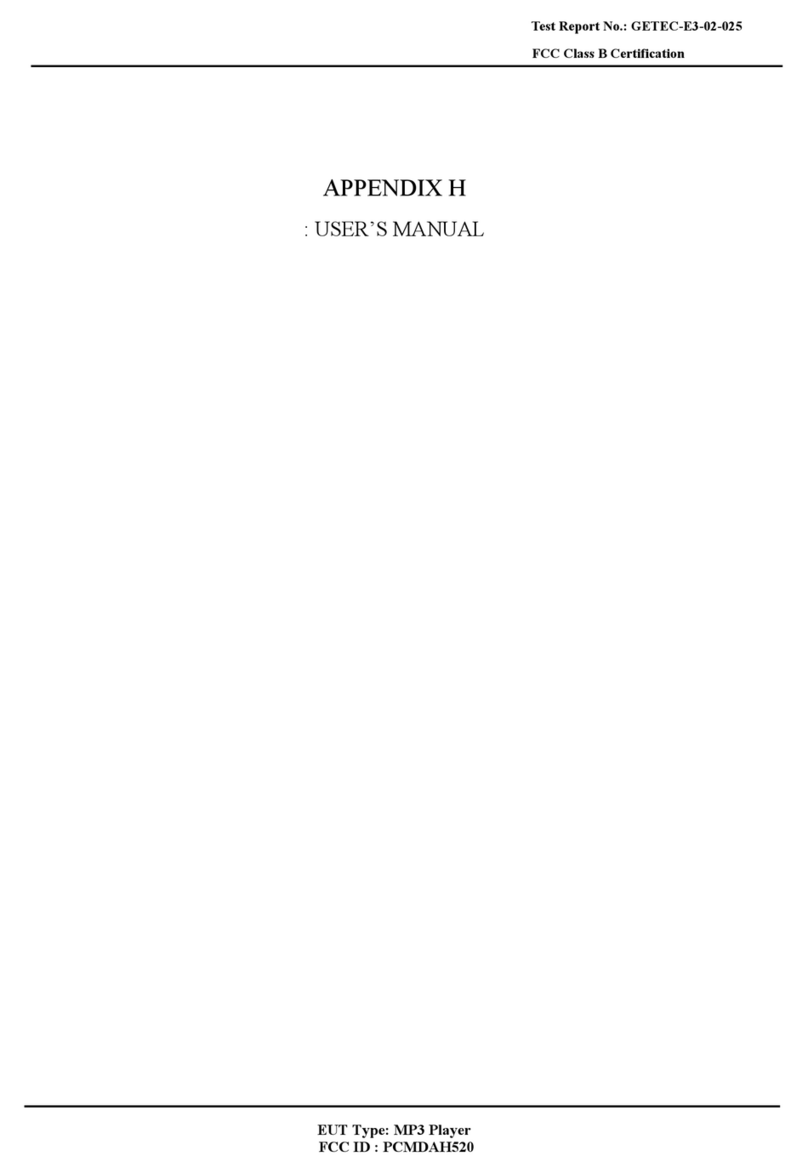Silicon Chip Music HALL mmf-1.3 User manual

102 Silicon Chip siliconchip.com.au
Celebrating 30 Years
Music Hall mmf-1.3 turntable
Music
Hall
mmf-1.3
turntable
It is a long time since SILICON CHIP
reviewed a turntable – almost 20
years, in fact. Since then, vinyl
records and turntables had
experienced a long decline . . .
but more recently quite a strong revival,
with many groups and musicians releasing
new vinyl recordings. To meet this new demand,
a number of new turntables have appeared on the
market, including the Music Hall mmf-1.3 reviewed here.
The mmf-1.3 is a 3-speed belt-driven manual turntable
fitted with an Audio-Technica AT-3600L moving
magnet cartridge and an inbuilt RIAA preamplifier,
providing line-level signals which can be fed to any modern
sound system.
If you have a stereo amplifier or surround-sound receiver
with its own RIAA preamplifier, you have the option of
switching the turntable’s outputs to the unequalised (ie,
no RIAA equalisation or preamplification).
And while the turntable is belt-driven, it is powered by
an electronically-controlled low voltage motor; probably
a crystal-controlled brushless DC motor (often described
as a DC servo motor) which provides speeds of 33.33, 45
and 78 RPM. This is a more elegant approach than used
in most belt-driven turntables of the past which typically
had a mains-power synchronous motor driving a stepped
pulley to provide, usually, just two speeds.
There are several benefits in using the low voltage
electronically-controlled motor . One of these is that the
Music Hall turntable can be used virtually anywhere that
12V DC is available (OK, perhaps not in a car or on a boat!).
It is not affected by the mains frequency (ie, 50Hz or 60Hz)
as it uses a 12V DC plugpack.
And since it does not use a synchronous motor locked
to the local mains frequency, the turntable’s speed can be
set to the exact value.
Review by Leo Simpson
mmf-1.3
turntable

December 2017 103
siliconchip.com.au Celebrating 30 Years
Music Hall mmf-1.3 turntable
The presentation of the Music Hall turntable is very clean
and simple: a shallow glossy back plinth supported on four
large vibration-damping feet and fitted with a removable,
moulded clear Perspex dust cover. Lifting the cover gives
access to the 4-position switch which turns on the power
and selects the three speeds: 33.33, 45 or 78 RPM.
The tonearm is a straight (not curved) design with a
removeable EIAJ headshell and adjustable counterweight
which allows the tracking force to be set between 1 and 4
grams (once it has been balanced). There is also an anti-
skating force adjustment.
Note that since this is a manual turntable, moving the
arm off the rest does not start the platter revolving – that
is done by the speed selector/power switch. And nor does
the platter stop revolving once the stylus runs into the
central groove.
So the playing procedure is to start the turntable, posi-
tion the stylus over the run-in groove and then flick the
damped lift/lower level to gently lower the cartridge into
the groove. At the end of play, you use the lever to raise
the tonearm and then you move it back to the rest position.
This is simplicity itself and the way most record enthu-
siasts like it.
The Audio-Technica AT-3600L moving magnet cartridge
is a middle-of-the-road model with a 0.6 mil conical stylus
and a recommended tracking force of 3.5 grams. It does have
a removeable stylus (AT-91R) so it can be replaced at some
time in the future (after you have played a lot of records!)
By the way, the AT-3600L cartridge is not suitable for
playing 78 RPM records. This will not affect most people
since 78 RPM discs are quite rare – but if you did want to
play them, to get the best results, you will need a cartridge
with larger stylus, typically 3 mil.
The much smaller stylus of any cartridge intended for
microgroove (ie, 33 and 45 RPM) records will ride in the
bottom of the groove of 78 RPM records and be very noisy.
In that case it is best to go for a dedicated 78 RPM mono
cartridge such as the Audio-Technica VM670SP.
The turntable itself is a lightweight aluminium casting
which has a thick rubber mat. Total weight of the platter
and rubber mat is 785g.
We like the inbuilt preamplifier on the Music Hall turn-
table as it means its output leads can be plugged into any
amplifier which can accept line level inputs, ie, with signal
levels up to 1 or 2V.
Setting up
The mmf.1.3 turntable requires very little assembly out
of the box. The main task is to install the platter on the
spindle and make sure the belt is sitting on the motor shaft.
On upacking the mmf-1.3 turntable, we checked the speed
of the turntable with the SILICON CHIP strobe disc and white
LED strobe (December 2015) and found it was spot on at all
speeds, straight out of the box. . .
. . . but if it proved to be slightly “out”, it’s a simple matter
of adjusting the speed by holding down the push button
for two seconds then turning the knob. Unfortunately, it is
under the turntable so takes a bit of juggling to get to!
Here’s the adjustment end of the tone arm, with the tracking
dial at the rear and the anti-skate control closest to the
camera. The tone arm is raised and lowered by the lever in
the foreground.
The belt drive fits right around the turntable inner rim
thence to the capstan, seen here in its access window. You
have to remove the platter mat to gain access to this window
but fitting the belt is neither difficult nor time consuming.

104 Silicon Chip siliconchip.com.au
Celebrating 30 Years
But anyone using a turntable for the first time would be
wise to check that the tonearm is correctly balanced and
that the tracking for and anti-skating settings are correct.
The instruction manual is quite good in this respect but
anyone who has never set up a turntable would probably
be wise to ask their audio retailer how it is done or have a
look at video on the internet.
RCA leads are supplied so it is simply a matter of con-
necting these to the line inputs on your amplifier and you
are ready to play. Before we did that, we checked the speeds
of 33.33, 45 and 78 RPM using our 100Hz white LED strobe
and strobe disc.
This showed that the speed settings were exact, with
no drift of the disc strobe markings on any speed setting
(see SILICON CHIP, December 2015: www.siliconchip.com.
au/Article/9640).
If the speeds had been slightly off, the turntable has a
facility for slightly increasing or decreasing the speed. This
is a small pushbutton and knob on the underside of the
turntable, at the lefthand side.
To change a speed setting, you first select the speed, then
press and hold the button for two seconds and a LED comes
on, You can then turn the knob to increase or decrease the
speed to the desired setting. After that, you press the but-
ton again, the LED will flash and then turn off and the new
speed setting will be stored by the unit’s microprocessor.
We then set up the arm for balance, set the tracking for
3.5 grams and adjusted the anti-skating force accordingly,
prior to testing the tracking ability of the cartridge using a
variety of test records, some of which provide very stringent
testing. In summary, the supplied Audio-Technica cartridge
is adequate for average listening but records with very high
recording levels will cause it to seriously mistrack.
By the way, we regard 3.5 grams as a fairly high tracking
force – we tried it at 2 grams and found that this made little
difference in tracking performance.
Our next series of tests involved frequency response and
we were able to confirm that the fitted Audio-Technica
3600L cartridge has a response within ±2dB from 20Hz
to 20kHz. Channel balance is within 1.5dB and channel
separation averages between -15 and -20dB. The waveform
on sinewaves is good. These tests were performed with the
CBS STR100 test record.
Wow & flutter was quite low and difficult to measure,
as was rumble. We would expect that result with this belt-
drive/electronically controlled motor system.
And then it was on to playing records. This was the
most enjoyable part of this review, being satisfied that the
Music Hall turntable and cartridge performs well. The
Audio-Technica has a clean, bright sound which does not
emphasise surface noise and clicks – most important if you
are playing older records which will inevitably have their
share. You can buy it with confidence.
The Music Hall mmf-1.3 turntable has a recommended
retail price of $499 inc GST.
For further information, contact the Australian distribu-
tors, Convoy International Pty Ltd, Phone (02) 9774 9900;
website www.convoy.com.au
The mmf-1.3 is a fully manual turntable, which means
it doesn’t start operating when you lift the tone arm.
The motor is controlled via the speed selection knob.
Unusually, this turntable offers a 78RPM speed.
The rear panel sports the 12V DC input socket (plugpack
supplied), a “GND” terminal and stereo RCA output
sockets. You can choose RIAA line-level or “straight”
phono output via the switch alongside the output sockets.
The mmf-1.3 is supplied with an Audio-Technica AT-3600L
moving magnet cartridge, a middle-of-the-road model with a
0.6 mil conical stylus and a recommended tracking force of
3.5 grams. Note that this stylus will not play 78RPM records!
The hinged perspex lid on the mmf-1.3 turntable is
completely removable, for those who prefer to operate that
way (or to house the turntable in a hifi unit, for example).
Size (without lid) is 435 W x 106 H x 367 D.
SC
